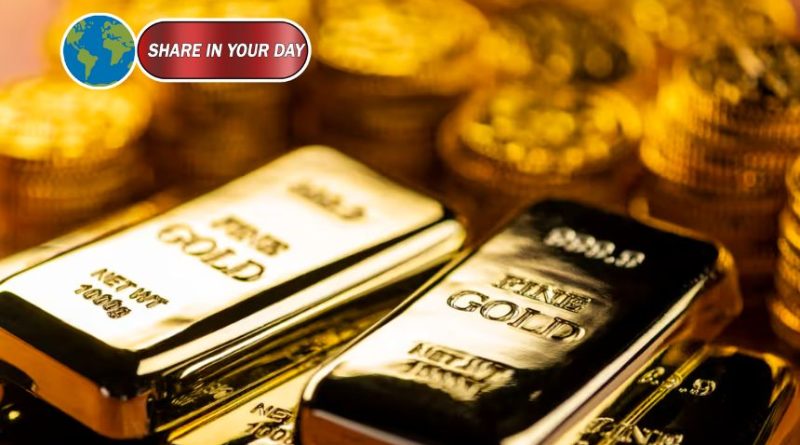Gold Plunges From Record High With Biggest One-Day Decline in 12 Years
Gold, which had been on an extraordinary year-long rally, suffered its sharpest single-day drop in more than a decade on Tuesday. The precious metal, often seen as a safe-haven asset during times of uncertainty, saw prices tumble by as much as 6%, marking the steepest percentage decline since June 2013 and the largest dollar drop in its history.

At its lowest point on Tuesday, spot gold fell to approximately $4,120 per troy ounce, after having reached an all-time high of nearly $4,400 just a day earlier. The sharp decline comes after months of continuous gains driven by economic concerns, rising inflation, and escalating global trade tensions. Despite this dramatic drop, gold remains up by 57% since the beginning of 2025, with silver and other precious metals also seeing significant rallies.
The Causes Behind the Sell-Off
Analysts point to several factors behind the sudden plunge in gold prices. One key element is the growing optimism surrounding the potential end of the U.S. government shutdown, which has been ongoing for nearly four weeks. The shutdown, coupled with the looming threat of unsustainable global government debt, had propelled gold to its record highs. As the political gridlock in Washington nears a resolution, market sentiment has shifted, leading investors to lock in profits.
In addition, the ongoing trade tensions between the U.S. and China have weighed heavily on global markets. However, with U.S. President Donald Trump expressing confidence that a trade deal with Chinese President Xi Jinping could be reached soon, investor optimism about an easing of these tensions contributed to the drop in gold prices.
Citi Research, in a recent note, suggested that both the end of the government shutdown and the potential for a U.S.-China trade deal could lead to a temporary consolidation of gold prices in the coming weeks. The firm maintained its three-month price target for gold at $4,000 per ounce, signaling that while the metal may see short-term fluctuations, its long-term outlook remains solid.
Precious Metals Across the Board
The sell-off wasn’t limited to gold. Silver, which had mirrored gold’s rise in recent months, also saw a significant decline, falling more than 8% on Tuesday to a low of $48.40 per troy ounce. The slump in silver prices highlights the broader weakness in precious metals, which had been surging alongside gold amid global economic uncertainty.
Shares of gold mining companies also took a hit, with the Van Eck Gold Miners ETF (GDX) falling by 9.4% on Tuesday. Newmont Mining (NEM), the world’s largest gold producer, saw its shares drop by 9%, leading decliners in the S&P 500. This broad-based sell-off underscores the market’s growing concern over the potential easing of factors that had previously driven the rally in precious metals.
Investors Cashing In on Gains
Some analysts believe that part of Tuesday’s sell-off can be attributed to investors simply cashing in on the substantial gains that gold and other precious metals have enjoyed in 2025. Even after the sharp decline, gold is still up an impressive 57% year-to-date, and silver has surged by 68%. With such strong gains, some investors may have seen the price drop as an opportunity to lock in profits, leading to the market correction.
The sell-off may also reflect caution ahead of a key inflation report scheduled for release later this week. The Bureau of Labor Statistics is expected to publish the September Consumer Price Index (CPI) report on Friday, though the ongoing government shutdown has delayed this and other crucial economic data. As gold is often used as a hedge against inflation, the delayed CPI report may have increased demand for the metal in recent weeks. With the report now on the horizon, some investors may be reassessing their positions.
What’s Next for Gold?
Despite Tuesday’s dramatic drop, gold remains a popular investment option for those looking to hedge against economic uncertainty. The precious metal’s long-term prospects continue to be shaped by factors such as inflation expectations, government debt levels, and geopolitical tensions. However, as the markets adjust to the possibility of a U.S.-China trade deal and the resolution of the U.S. government shutdown, gold may experience a period of consolidation.
Looking ahead, analysts will closely monitor any developments on the trade front and in Washington, D.C., as these events could influence investor sentiment and impact gold prices. While the metal has faced a sharp correction, the underlying economic conditions that drove its rise earlier in the year remain largely intact, meaning gold’s volatility is likely to continue in the coming months.




